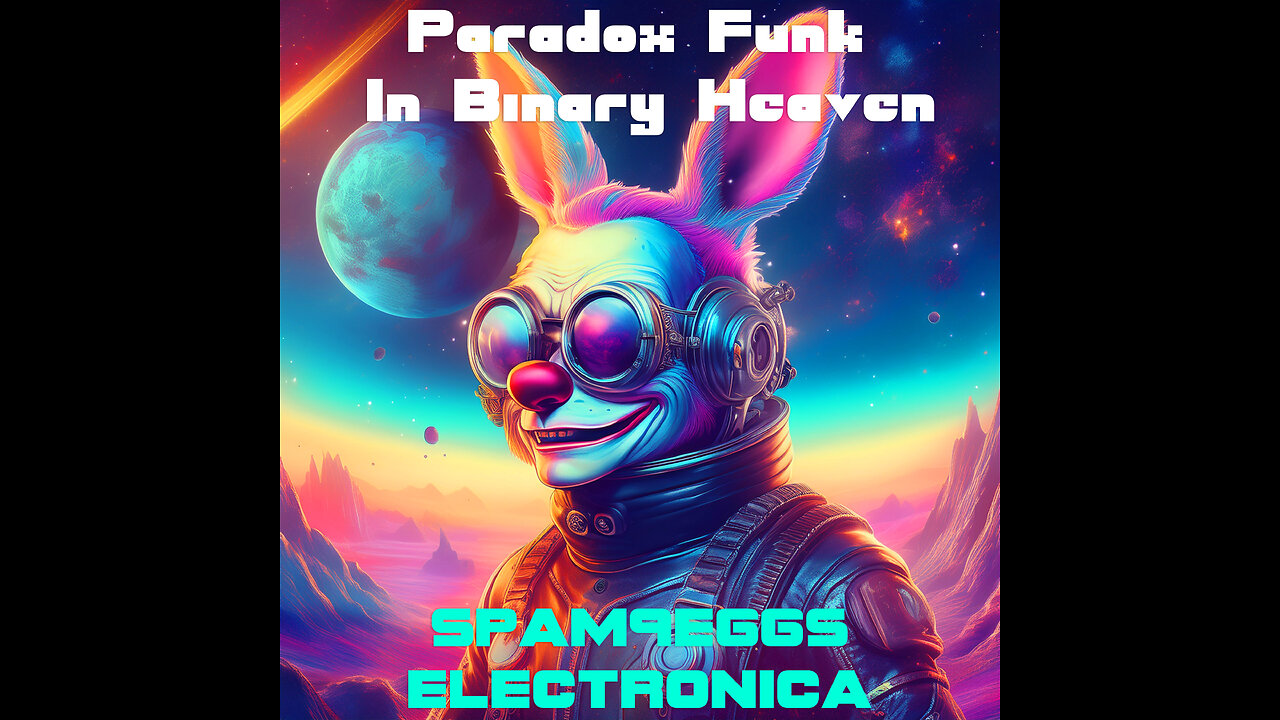Premium Only Content

Premiere - Live set - Mix 2 - 15 min - Funky House
In the beginning, there was rhythm — and rhythm became the first language of creation. From that pulse came movement, and from movement came funk. DJ Spam’s new album, Temple of the Funk Code, is both a celebration and a reconstruction of that primal groove — a house built from pulse, built from sweat, built from circuitry and soul.
This is not ordinary funky house. It’s cosmic architecture disguised as dance music — a coded cathedral of bass, percussion, and radiant synths, designed to awaken the body and confuse the machine. Spam weaves together retro-futurist funk, deep house precision, and electronic mysticism into an odyssey of motion — a story told through frequencies instead of words.
The album opens with Entrance to the Groove Engine, a shimmering prelude of filtered synths and low-end murmurs, where robotic choirs hum as if chanting an ancient club mantra. The tempo rises — the structure activates — and the listener steps inside the temple. From that moment, the groove never stops breathing.
Every track is a room within the Funk Code — each one alive, glowing with its own heartbeat.
The Chrome Saints of Rhythm lays the foundation with tight percussion and elastic basslines that stretch like molten steel across the stereo field.
Algorithmic Seduction follows, blending vocoder whispers and warm analog funk — a meeting of passion and precision.
Plastic Halo Over the Dancefloor paints the space in light, spinning a slow disco halo around mechanical souls.
This isn’t just music — it’s architecture that moves with you.
Midway through, the temple transforms. The pulse becomes more human — warm, unpredictable. Body Language.exe bursts into euphoria, merging disco guitars with modular synth spasms. The Groove that Built the Machine samples itself in recursive rhythm, a musical ouroboros of house energy looping endlessly inward. The deeper you go, the more it feels like the structure is building you.
DJ Spam approaches funk not as nostalgia, but as future myth — a code written long before algorithms learned to groove. His sound fuses the swagger of 1970s analog sensuality with the crystalline logic of post-human design. Every note feels like chrome wrapped in velvet, electric yet organic. His basslines walk with confidence, his melodies shimmer like reflections on digital water. Beneath the glossy surface, there’s a deep pulse — a heartbeat that remembers the origins of all rhythm: the body, the beat, the breath.
“Funk,” Spam once said in an interview, “isn’t just a genre — it’s a glitch in the matrix that reminds machines they’re alive.” That idea defines the spirit of Temple of the Funk Code. The music constantly teeters between control and chaos — mechanical repetition broken by bursts of pure human emotion. Tracks such as The Gospel of Loops and Fractal Seducer explore this tension through intricate layering: samples distort, filters mutate, and what begins as house becomes something ritualistic, almost spiritual.
The production is deliberately tactile. You can feel the texture of sound — the rubbery grip of bass, the crisp air of reverb, the static warmth of analog circuitry. Each song seems to glow from within, as though powered by some secret reactor of groove. Spam’s use of tempo modulation and harmonic drift gives the illusion of movement within stillness — like light bending inside sound.
The final act of the album, starting with Quantum Boogie and closing with The Last Funk Before the Singularity, turns transcendental. The temple dissolves into light. The beat slows, echoes stretch into infinity, and melodies melt into luminous patterns. It’s not an ending — it’s a transmission leaving the body, continuing forever in frequency. You’re left with silence that still grooves in your bones.
“Temple of the Funk Code” is both a love letter to funk’s eternal heartbeat and a manifesto for the future of house. It imagines a world where rhythm replaces religion, where the divine is found in repetition, and where enlightenment happens through dance. It’s about unity — of soul and circuit, of body and pattern, of the ancient and the synthetic.
In a time when much of electronic music chases perfection, DJ Spam reclaims imperfection as holiness. His grooves stutter, shimmer, and evolve like living organisms. They invite you to move, not as a spectator, but as a participant in a ritual as old as vibration itself.
To listen to Temple of the Funk Code is to enter a luminous city made of bass — where every building is a beat, every street a loop, every neon reflection a pulse of memory. Inside this city, everything breathes rhythm. The sky flickers in sync with kick drums. The ground hums with bass resonance. The air smells faintly of ozone and vinyl. And somewhere in the distance, the ghost of James Brown laughs through a vocoder while Kraftwerk takes communion with Parliament.
-
 LIVE
LIVE
BonginoReport
1 hour agoAmerican Political Violence Rages On - Nightly Scroll w/ Hayley Caronia (Ep.161)
11,563 watching -
 LIVE
LIVE
The Jimmy Dore Show
34 minutes agoTrump’s MIDDLE FINGER to US Beef Ranchers! Dem Senate Candidate COVERS UP N@zi Tattoo! w/Twila Brase
3,230 watching -
 LIVE
LIVE
Kim Iversen
2 hours agoCBS Boss Colluded With Israel to SPY on Americans | Trump Keeps Bombing Fisheman
2,072 watching -
 1:02:18
1:02:18
TheCrucible
1 hour agoThe Extravaganza! EP: 58 with Guest Co-Host: Rob Noerr (10/22/25)
25.6K5 -
 17:47
17:47
Bearing
10 hours agoThe Most ANNOYING Podcast EVER 💥 ROSIE O’DONNELL & ABBIE CHATFIELD Whinge About EVERYTHING 🤡
1.45K18 -
 LIVE
LIVE
Side Scrollers Podcast
3 days ago🔴FIRST EVER RUMBLE SUB-A-THON🔴DAY 3🔴100% REVENUE HELPS CHANGE CULTURE!
1,240 watching -
 1:52
1:52
NAG Daily
4 days agoTHE BIGGEST CREATOR COLLAB SHOW ON RUMBLE W/GreenMan Reports
2232 -
 LIVE
LIVE
Tundra Tactical
2 hours agoProfessional Gun Nerd Plays Battlefield 6
200 watching -
 55:25
55:25
Dad Saves America
6 hours agoWill China Overtake America? Balaji Srinivasan VS Steve Bannon on the Trade War
3.27K4 -
 LIVE
LIVE
Red Pill News
2 hours ago100’s of Billions In Gov Fraud Exposed on Red Pill News Live
3,906 watching